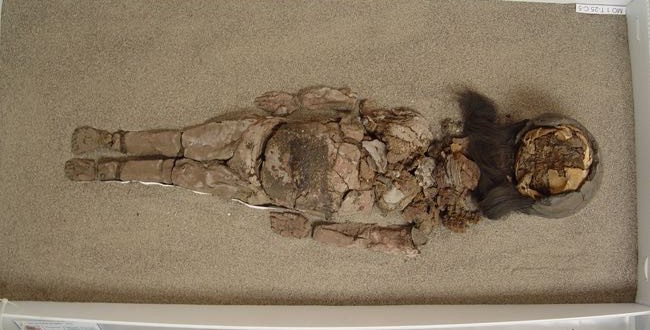The world’s oldest mummies, dating back to 5050 BC, are beginning to degrade and turn to black ooze due to climate change, says a study.
The decay was detected across a range of ancient relics including the walls of King Tutankhamen’s tomb, Apollo space suits, Chinchorro mummies and historic manuscripts, prompting a study led by Harvard into the cause.
It was first noticed among the 120 Chinchorro mummies housed in the University of Tarapacá’s archaeological museum in Arica, Chile.
“We knew the mummies were degrading but nobody understood why,” said Ralph Mitchell, one of the researchers, in a news release. “This kind of degradation has never been studied before. We wanted to answer two questions: what was causing it and what could we do to prevent further degradation?”
The researchers took physical samples from the mummies-both degrading skin and undamaged skin. They quickly found that the degradation was microbial, and then set about determining if there was a microbiome on the mummy skin that was responsible.
“The key word that we use a lot in microbiology is opportunism,” said Mitchell. “With many diseases we encounter, the microbe is in our body to begin with, but when the environment changes it becomes an opportunist.”
The researchers isolated microbes present in samples and then cultured organisms in the lab. They then tested the samples to see what happened when they were exposed to different humidity levels.
Humidity levels in the area where the museum was located have been on the rise, and the scientists found that these levels may be to blame for the mummy degradation. These findings, in particular, could help the museum fine-tune temperature, humidity and light levels to preserve the mummies.
Agencies/Canadajournal
 Canada Journal – News of the World Articles and videos to bring you the biggest Canadian news stories from across the country every day
Canada Journal – News of the World Articles and videos to bring you the biggest Canadian news stories from across the country every day




These items are kept in climate controlled conditions.Are people so hooked on climate change they put out this type of information?